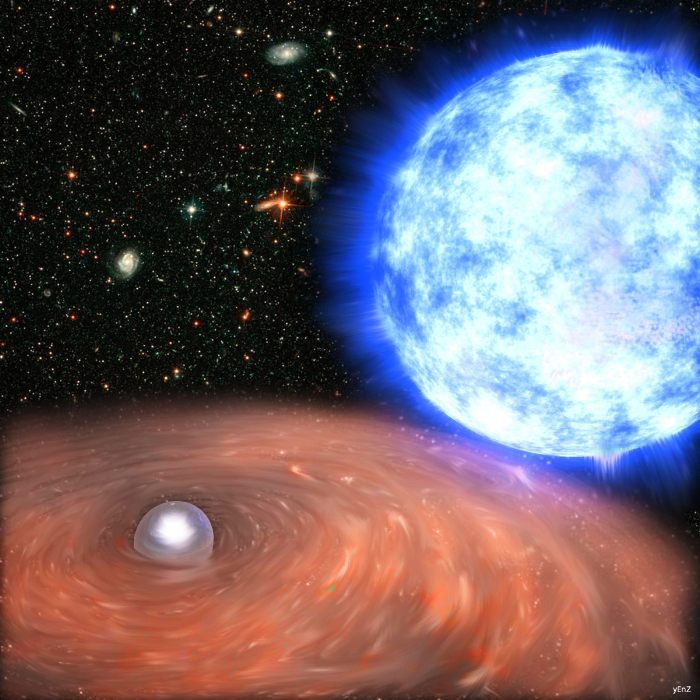
 Credit: Francesco Mereghetti, background image: NASA, ESA and T.M. Brown (STScI)
Credit: Francesco Mereghetti, background image: NASA, ESA and T.M. Brown (STScI)
Heavyweight
As you probably know, stars like the sun produce heat and light by burning hydrogen to helium in their cores. When all the hydrogen is used up, the core contracts and, depending on how massive the star is, the core may become hot enough to burn helium to carbon. But many stars are not massive enough to burn carbon; if that's the case then the core shrinks to a certain minimum size and it eventually becomes a "white dwarf" star after the outer layers of the star are blown away (in a process still not fully understood). The core (about the size of the earth) doesn't shrink any further because it's held up by a quantum mechanical effect called electron degeneracy pressure. As shown by Subrahmanyan Chandrasekhar, there's a limiting mass that can be supported by the pressure of degenerate electrons. This Chandrasekhar limit is about 1.4 times the mass of the Sun. White dwarfs that grow larger than this limit catastrophically collapse, producing an enormous supernova explosion which can be seen to the edge of the Universe. These supernovae all have about the same intrinsic brightness and serve as standard candles which illuminate distance and time nearly back to the Big Bang. Now astronomers have identified one such system in our own Milky Way. This system, called HD49798, consists of an evolved, stripped down star with a white dwarf companion. An artist's impression of the system is shown above, showing the white dwarf (and its accretion disk) in the foreground. XMM-Newton observations of the system have measured X-ray pulsations from the white dwarf, and have measured an eclipse of the white dwarf going behind the companion star. These data allow astronomers to measure the mass of the white dwarf, and it turns out that the white dwarf weighs in at a whopping 1.3 solar masses, one of the most massive white dwarfs ever weighed. It only needs to grab a little more matter from its companion to push it over the Chandrasekhar limit - when that happens the explosion will be spectacular and probably bright enough to be seen in the daytime.
Published: September 14, 2009
<
HEA Dictionary ● Archive
● Search HEAPOW
● Other Languages
● HEAPOW on Facebook
● Download all Images
● Education ● HEAD
>
Each week the HEASARC
brings you new, exciting and beautiful images from X-ray and Gamma ray
astronomy. Check back each week and be sure to check out the HEAPOW archive!
Page Author: Dr. Michael F. Corcoran
Last modified Monday, 26-Feb-2024 17:21:36 EST


